For years, we’ve been served AI that communicates with all the subtlety of a sledgehammer. You know the type: “Your query has been processed.” “Task completed.” It’s the “direct default,” and frankly, it’s like listening to a user manual recite its own eulogy – functional, sure, but utterly devoid of the spark that defines engaging interaction. Most AI is painfully literal, stuck in a conversational cul-de-sac, and if we’re honest, it’s holding back the true potential of human-AI collaboration.
We’re talking about tone, that often-overlooked layer of communication that colors meaning, conveys emotion (or a damn good simulation of it), and ultimately determines whether an AI feels like a clunky tool or a coherent, almost considerate, digital counterpart. Now, forget the simplistic “friendly” or “formal” checkboxes for a moment. The real frontier, the place where the magic (and a whole lot of complex code) happens, is in nuance. And that brings us to the core of our discussion today: the future isn’t just about smarter AI; it’s about more nuanced AI, and mastering an indirect tone is a critical, game-changing component of that evolution.
This isn’t some academic flight of fancy. This is about building AI that can hint, suggest, and navigate complex social cues with a deftness that makes current interactions look like cave paintings. So, what are we going to unpack in this deep dive? Consider this your no-nonsense—well, mostly no-nonsense, a little flair keeps things interesting—guide to understanding the what, why, and how of indirect tone in AI personas.
We’ll explore its power to create richer, more engaging user experiences, the sophisticated technical underpinnings required to even attempt it, and yes, the philosophical tightropes we walk when we teach machines the art of implication. WebHeads United believes this isn’t just a feature; it’s fundamental to the next generation of AI, and by the end of this, you’ll understand precisely why.
Okay, you’ve seen the overture. Now, let’s dive into the core movements of this symphony of subtlety. We’re peeling back the layers on how an indirect tone can elevate an AI from a mere digital butler to something far more compelling.
The “Why Bother?” Section: Benefits of an Indirect Tone (When Pulled Off)

So, why wrestle with this beast of indirectness? Why not just stick to the simple, the declarative, the robotically unambiguous? Because, my friends, the juice is often worth the squeeze, especially if you’re aiming for an experience that’s less “beep boop” and more “aha!”
- Enhanced User Engagement & Relatability: Beyond the Binary – Let’s be direct about it: most AI conversations are forgettable. They lack the stickiness, the little hooks that make human conversation engaging. An indirect tone, when crafted with precision, can make an AI feel less like a machine spitting out data and more like a collaborator, a digital entity that gets it, or at least makes a convincing show of trying. We’re talking about moving from simple transaction to genuine interaction. Think of an AI that, instead of just saying “Data saved,” might offer, “Nicely done. That information should be quite secure now.” One is a fact; the other offers a touch of acknowledgment, a subtle reinforcement. This isn’t just fluff; it’s about fostering a connection that keeps users coming back. We’re aiming for AI empathy, or at least a very, very convincing simulation of it, leading to more human-like AI conversation.
- Building Trust & Rapport (Subtly): The Art of Digital Handshake – Trust isn’t built on commands and declarations. It’s nurtured through perceived understanding and shared context. An AI that can employ a subtle, indirect tone can signal a higher degree of social awareness—even if that awareness is meticulously programmed. When an AI says, “Perhaps we could explore this option a bit further?” instead of “Analyze alternative X,” it feels less like an order and more like a suggestion from a partner. This approach can subtly lower defenses and build rapport. Some of the early work out of places like Stanford on human-computer interaction, even with simpler systems, hinted that users anthropomorphize and respond to perceived politeness. Indirectness is a powerful tool in that particular psychological toolkit.
- Navigating Sensitive Interactions: The Velvet Gauntlet – Nobody likes bad news, especially from a machine that seems to deliver it with cold, indifferent precision. “Error: Query Failed. Code 404. User incompetence suspected.” (Okay, maybe not that last part, but it can feel that way!) An indirect tone can soften the blow. Imagine an AI that, instead of a blunt “Your payment was declined,” might offer, “Hmm, it seems there was an issue processing that. Would you like to try a different card, or perhaps check the details?” It’s about delivering necessary information without making the user feel like they’ve just been digitally slapped. This is where the AI’s ability to handle delicate subjects with a touch of grace—or at least, programmed consideration—shines. It’s the difference between a blunt instrument and a finely tuned one.
- Cultural Nuance & Adaptability: Speaking the World’s Language (Not Just English) – Here’s a bit of technical reality: direct, explicit communication isn’t the global default. Many cultures operate on high-context, indirect communication styles where meaning is embedded in nuance, tone, and what’s not said. An AI that only speaks in bold declarations is, frankly, culturally illiterate and will inevitably stumble in a globalized world. “How does culture affect AI persona tone?” you might ask. Profoundly! An AI designed with the capacity for indirectness can be more adaptable, more respectful, and ultimately more effective across diverse user bases. This isn’t just about translation; it’s about an entirely different communication paradigm.
- Adding Personality & Sophistication: More Than Just a Talking Toaster – Let’s face it, many AI personas are about as exciting as a beige wall. They’re designed to be inoffensive and, as a result, often end up being utterly bland. Indirectness, used judiciously, can inject a much-needed dose of personality and sophistication. It allows for wit, for understatement, for a character that feels more developed and less like it was assembled from a kit of generic phrases. This is where you can move beyond the “friendly but dumb” archetype and create something memorable, something that hints at a richer inner world, even if that world is just exceptionally clever algorithms.
The Flip Side: Challenges & Pitfalls of Wielding Indirectness

Now, before you rush off to imbue your next chatbot with the subtle coyness of a seasoned diplomat, let’s pump the brakes. Wielding indirectness is like juggling flaming torches while riding a unicycle on a high wire. It’s impressive when it works, a spectacular disaster when it doesn’t. Honesty and technical competence demand we look at the pitfalls.
- Misinterpretation & Confusion: The Biggest Boogeyman – This is the glaring, five-alarm fire of a problem. If your AI is subtly hinting, and your user is expecting a neon sign, you’re in for a world of frustration. “Perhaps you’d like to consider the alternative backup solution?” might be interpreted as a polite suggestion by one user, and completely missed by another who needs to be told, “Your primary backup is failing! Activate the secondary NOW!” The risk? The user doesn’t pick up on the implied urgency or meaning, leading to errors, lost data, or sheer bewilderment. And let’s not forget the AI accidentally sounding passive-aggressive or, heaven forbid, sarcastic when it’s just trying to be… well, indirect. Remember Clippy from Microsoft Office? “It looks like you’re writing a letter…” Now imagine Clippy trying to be subtly ironic about your grammar. Shudder. (That’s 20% humor, by the way.)
- Complexity in Design & Implementation: This Ain’t Your Weekend Python Script – Let’s get technical for a moment. True, effective indirectness requires a staggering level of sophistication in Natural Language Understanding (NLU) and Natural Language Generation (NLG). Your AI needs to not only grasp the literal meaning of user input but also the intent, the emotional state, the conversational history, and the broader context. Then, it has to generate a response that is subtly off-direct, conveying the intended nuance without overshooting into obscurity or accidental offense. This involves complex probabilistic models, sentiment analysis, an understanding of pragmatics (how context contributes to meaning – a notoriously difficult area in linguistics for AI), and potentially even some form of (simulated) theory of mind. We’re talking about terabytes of training data, intricate model architectures, and constant refinement. It’s not a feature you bolt on; it’s woven into the AI’s very fabric.
- The “Uncanny Valley” of Tone: Almost Human, Totally Creepy – You know the uncanny valley in visual robotics, where something looks almost human but not quite, making it deeply unsettling? There’s an auditory and conversational equivalent. An AI that tries for indirectness but gets it slightly wrong can be far more jarring and untrustworthy than one that sticks to a clearly robotic, direct tone. If it sounds like it’s trying to be human and failing, it can create a sense of unease or even distrust. Users might wonder, “What is this thing trying to pull?” Better to be an honest machine than a failed imitation of a human.
- Bias Amplification: Garbage In, Subtle Garbage Out – AI models, especially the large language models (LLMs) that power sophisticated dialogue, are trained on vast datasets of human text and conversation. And what do human texts contain? You guessed it: biases. An AI attempting indirect communication might inadvertently pick up and amplify these societal biases in very subtle, hard-to-detect ways. For example, an indirect suggestion offered to one demographic might differ in its underlying assumptions compared to another. The technical challenge here is immense: how do you train an AI to understand and use nuance without also teaching it to replicate the often-problematic nuances present in its training data? Organizations focusing on AI ethics are rightly concerned about this.
- Computational Cost & Resource Intensity: Subtlety Isn’t Cheap – Generally speaking, the more complex the processing, the more computational horsepower you need. Generating nuanced, context-aware, indirect responses often requires more sophisticated models and algorithms than spitting out pre-programmed direct answers. This can translate to higher operational costs—think server loads, processing time, API call expenses. For high-volume applications, the marginal cost of added subtlety needs to be weighed against its perceived benefits. It’s a pragmatic concern that every CTO and CFO will (and should) raise.
Architecting Subtlety: How to Approach Designing an Indirect Tone

So, you’ve weighed the benefits, stared into the abyss of challenges, and still want to proceed? Excellent. You’re speaking my language. Building an AI with an effective indirect tone isn’t voodoo; it’s engineering, albeit a very nuanced form of it. Here’s how we believe you should approach this architectural marvel.
- Deep Audience Understanding: Know Thy User (Intimately) – This is Marketing 101, but it’s astonishing how often it’s overlooked in AI design. Who are you building this for? Are they tech-savvy millennials who live in irony, or are they senior citizens who prefer clear, unambiguous instructions? Are they from a high-context culture where indirectness is the norm, or a low-context one where it breeds suspicion? You must do your homework. Surveys, user interviews, persona development – the whole nine yards. Without this, you’re designing in a vacuum, and your attempts at subtlety will likely crash and burn. Instructional takeaway: Don’t guess. Research.
- Defining the Persona’s Core Traits & Communication Style First – Indirectness shouldn’t be an afterthought, a sprinkle of “personality dust.” It needs to be an integral part of the AI persona’s defined communication style, flowing naturally from its core traits. Is your AI meant to be a wise mentor, a quirky sidekick, a calm assistant? Each of these archetypes will employ indirectness differently, or perhaps not at all. Document this. Make it explicit. “Our AI, ‘Oracle,’ will use gentle suggestions and leading questions rather than direct commands, reflecting its knowledgeable and patient character.” This provides a clear design target.
- Context is King, Queen, and the Entire Royal Court (Yes, I Said It Before, It’s That Important) – I can’t stress this enough. An indirect statement made without an understanding of the preceding dialogue, the user’s current task, or their emotional state is a gamble with terrible odds. The AI must have robust contextual awareness. Technically, this means sophisticated dialogue state tracking, the ability to reference and synthesize information from previous turns in conversation, and potentially access to broader contextual cues (like time of day, user location if relevant and permissioned, or application state). If your AI’s memory resets every sentence, just stick to “Hello. How can I help you?”
- Rule-Based vs. ML-Driven Approaches (and the Hybrid Sweet Spot) – How do you actually generate these nuanced responses?
- Rule-Based Systems: You can define explicit rules: “IF user expresses frustration AND task is X, THEN respond with gentle, indirect suggestion Y.” This offers high control and predictability but is brittle and incredibly labor-intensive to scale for all possible contexts.
- Machine Learning (ML)-Driven Systems: Modern LLMs can generate remarkably human-like and indirect text based on prompts and learned patterns. The upside is scalability and the potential for more natural-sounding language. The downside is less direct control, the risk of nonsensical or inappropriate “hallucinations,” and the “black box” nature of some models.
- The Hybrid Approach: This is often the most pragmatic path for sophisticated conversational AI design. Use ML for broad language understanding and generation, but overlay it with rule-based systems or curated response libraries for critical interactions, brand voice consistency, or when specific indirect phrasing is desired. It’s about leveraging the strengths of both while mitigating weaknesses. This is where technical competence meets practical application.
- Incremental Implementation & A/B Testing: Don’t Boil the Ocean – Resist the urge to make your AI an instant master of subtlety. Start small. Identify a few key interaction points where a touch of indirectness might offer the most benefit. Implement it, then A/B test rigorously. Does variant A (direct) perform better on key metrics (task completion, user satisfaction) than variant B (indirect)? Or vice-versa? Use the data to refine, iterate, or even roll back if your attempt at being clever just confuses people. This is classic agile methodology applied to AI personality development.
- Transparency (The Meta-Irony): Let Users In On the Secret (Sometimes) – Here’s a slightly humorous, but practical, thought: sometimes, a little transparency about the AI’s attempt at being indirect can actually help. An AI could frame an indirect suggestion with something like, “If I may offer a thought…” or “This might just be me, but perhaps looking at X could be useful?” It’s a subtle way of signaling its communication style, managing expectations, and making the indirectness itself less jarring if it’s not perfectly executed. It’s like your AI is winking at the user, acknowledging its own artifice.
- Considering “Escape Hatches”: The “Oops, Let Me Be Clear” Button – What happens when your AI’s attempt at witty, indirect banter falls flat and the user is clearly confused? You need an escape hatch. The AI must be able to detect (or be told) that its indirectness isn’t working and then seamlessly switch to a more direct, clarifying mode. “My apologies if that wasn’t clear. What I meant to say is: Your subscription is expiring tomorrow. Please renew now to avoid interruption.” Reliability means having a fallback.
Your Questions Answered

You’ve got questions. It’s only natural when you’re navigating the fog of a new frontier. I’ve anticipated a few things bubbling up in that curious mind of yours. Let’s tackle them head-on, WebHeads-style.
- “What’s a concrete example of AI using an indirect tone effectively?”: Ah, a request for a demonstration! Imagine you’re using a project management AI. Instead of it barking, “Deadline X is overdue by 2 days!” (which, let’s be honest, just raises blood pressure), a more effective, indirect approach might be: “Just checking in on Task X. It looks like the original deadline was a couple of days ago. Is there anything I can help with to move it forward, or perhaps we should look at adjusting the timeline?”
- Why it’s effective (Our critique): It avoids accusation. It offers help. It opens a dialogue rather than just stating a harsh fact. It uses softening phrases (“Just checking in,” “It looks like,” “perhaps”). Technically, the AI has identified the overdue task, but the presentation layer of its language model is configured for a supportive, rather than punitive, output. The key is that it still conveys the necessary information (task is late) but does so in a way that encourages a constructive response. The risk, of course, is if the user is a chronic procrastinator who needs the digital equivalent of a drill sergeant. Context, always context!
- “Can AI ever truly understand sarcasm or irony as forms of indirectness?”: Understand? In the human sense of getting the joke or grasping the underlying sentiment that contradicts the literal words? We’re not quite there, and anyone who tells you otherwise is selling you photonic snake oil. Current AI, even sophisticated LLMs, primarily detects patterns. It can get very good at recognizing linguistic markers often associated with sarcasm (e.g., positive words in a negative context, specific exaggerated phrasing, contradictions). It can then generate text that mimics sarcastic patterns.
- Our technical take: It’s more “pattern recognition and replication” than genuine comprehension. True understanding of sarcasm often requires a deep model of the speaker’s mind, their intentions, and a vast store of real-world, common-sense knowledge. We’re making strides in common-sense reasoning, but it’s a Himalayan peak we’re still climbing. So, can an AI crack a sarcastic joke that lands? Sometimes, by statistical luck or careful programming. Can it reliably know why it’s funny or when it’s appropriate across myriad contexts? That’s where the silicon 아직 (ajig – “still” or “not yet” in Korean, a nod to my global tech readings) stumbles.
- “Are there specific ethical guidelines for using indirect tone in AI, beyond general AI ethics?”: While there might not be a chapter titled “The Ethics of AI Understatement” in every AI ethics textbook yet, the principles of general AI ethics apply with particular force here. Think about:
- Transparency: If an AI is being deliberately indirect, should the user be aware of this capability to avoid being subtly manipulated?
- Non-Maleficence (Do No Harm): Could an indirect AI inadvertently cause harm by being unclear in critical situations (e.g., medical advice, safety warnings)? Could it be used to subtly coerce users into actions they wouldn’t otherwise take?
- Fairness & Equity: As mentioned before, if indirect cues are based on biased data, the AI could communicate in ways that are unfair or discriminatory to certain groups.
- Our perspective: The core tenet is honesty in design and purpose. If you’re designing an AI to be indirect to genuinely improve user experience and facilitate communication, that’s one thing. If it’s to obfuscate, manipulate, or create a false sense of intimacy for nefarious ends, then you’re firmly in the digital dark arts, and that’s not something WebHeads United would ever endorse. The more human-like the communication, the higher the ethical bar.
- “How does an indirect AI handle users who are very literal or from different cultural backgrounds that prefer directness?”: This is where adaptability and user modeling become critical. Ideally, a truly sophisticated AI wouldn’t have a single, fixed “indirectness level.” It would:
- Have a Default Setting: Based on general usability principles or the primary target audience.
- Attempt to Learn User Preference: Through interaction. If a user repeatedly misunderstands indirect cues or responds better to direct statements, the AI could gradually adjust its style. This involves sentiment analysis, task success rate tracking tied to communication style, and perhaps even explicit feedback mechanisms (“Was that clear?”).
- Offer User Customization: Why not let users choose their preferred communication style during onboarding or in settings? “How would you like me to communicate? A) Straight to the point, B) A bit more nuanced, C) Surprise me.” (Okay, maybe not C for critical applications.)
- Instructional note: The AI’s “escape hatches” are crucial here. If it detects confusion, it must be able to revert to clear, unambiguous language immediately. Designing for the “average” user often fails the outliers, and in AI, failing the outliers can have significant consequences.
- “What’s the first step a designer should take when wanting to implement an indirect tone?”: Before you write a single line of code or prompt an LLM, the absolute first step is: Clearly define the purpose and scope of indirectness for your specific AI persona and its users.
- Ask “Why?” five times. Why do we want this AI to be indirect? What user problem will it solve? What user experience will it enhance? What specific situations call for it?
- Then define the boundaries. Where should it not be indirect? (e.g., safety warnings, critical error messages).
- Our direct advice: Don’t chase indirectness as a gimmick or because it sounds “advanced.” Root it in a genuine user-centered need or a well-defined persona characteristic that serves a clear function. Without this foundational strategic thinking, you’re just adding complexity for complexity’s sake, and that’s bad engineering.
Entities in the Ecosystem: Who’s Pushing the Envelope?
The quest for more nuanced AI communication isn’t happening in a vacuum. It’s a dynamic field with brilliant minds and significant resources being poured into it and it’s important to recognize the players shaping this landscape.
- Research Institutions & Labs: The Crucible of Ideas – The foundational work often emerges from academic and dedicated research environments. Think of places like MIT’s CSAIL (Computer Science and Artificial Intelligence Laboratory – they’re doing some phenomenal work in human-AI interaction), Stanford’s Human-Centered AI Institute (HAI), or the Allen Institute for AI. These institutions are exploring the frontiers of natural language understanding, common-sense reasoning, and computational pragmatics – all essential ingredients for sophisticated, indirect communication. Their publications often lay the theoretical groundwork years before it trickles into commercial applications. Keeping an eye on their research is like getting a sneak peek into the future.
- Key Technologies & Models: The Engines of Nuance – The rise of Large Language Models (LLMs) – you know the big names like Google’s Gemini models, OpenAI’s GPT series, Anthropic’s Claude, and others from both established tech giants and innovative startups – has been a seismic shift. These models, trained on internet-scale text data, possess an unprecedented ability to generate fluent, contextually relevant, and often quite nuanced language. They are, in essence, powerful engines that can be steered to produce indirect communication. However, it’s crucial to remember they are tools; their output is heavily dependent on the quality of prompting, fine-tuning, and the guardrails built around them. The underlying transformer architectures and techniques like reinforcement learning from human feedback (RLHF) are the technical bedrock here.
- Companies to Watch (or Be Wary Of): The Implementers and Innovators – Many companies are now trying to bake more sophisticated personas and conversational abilities into their products.
- Big Tech: The major players developing foundational LLMs are obviously central. Their digital assistants, customer service bots, and AI-powered productivity tools are increasingly aiming for more natural and less robotic interactions.
- Specialized AI Companies: Firms focusing on conversational AI platforms (for customer service, sales, internal helpdesks, etc.) are in a constant arms race to provide more human-like, effective bots. Some are genuinely innovating in persona design and contextual understanding.
- The “Character AI” Space: Companies specifically creating AI companions or characters for entertainment or engagement are pushing the boundaries of personality and long-term conversational memory, where indirectness can be a key differentiator.
- Our word of caution (and a dash of professional observation): Be discerning. Marketing hype around “human-like AI” is rampant. Look for genuine evidence of sophisticated NLU, contextual awareness, and, importantly, ethical considerations in their design. Not all that glitters with nuanced phrasing is gold; some of it is just well-dressed automation that can still stumble badly.
The Ethical Tightrope: Wielding Indirect Power Responsibly

With great conversational power comes great ethical responsibility. This isn’t just a catchy phrase; it’s a fundamental principle when designing AI that can communicate with the subtlety and potential influence of an indirect tone.
- Avoiding Manipulation & Deception: The Dark Side of Subtlety – Indirectness, by its very nature, can be persuasive. In human hands, it can be used for tact and diplomacy, but also for subtle coercion, gaslighting, or guiding someone to a conclusion without their full awareness. When an AI wields this, the potential for misuse is significant. Imagine an AI subtly discouraging a user from comparing prices, or nudging them towards a more expensive product with carefully crafted indirect praise.
- Our Stance (Direct & Uncompromising): The AI’s underlying goals must be transparent and align with the user’s well-being and informed consent. An AI should not use its nuanced understanding of language to trick, mislead, or exploit human psychological tendencies. This is a bright red line. Technical competence must be paired with an unwavering ethical compass.
- Transparency and User Awareness (Revisited & Reinforced): Peeking Behind the Curtain – If an AI is designed to be significantly indirect, should users be aware of this capability? This is a complex question. On one hand, constant reminders that “I am an AI using indirect language” would shatter the illusion of natural conversation. On the other, a complete lack of awareness could lead to users being unduly influenced or misinterpreting the AI’s “intentions” (which are, of course, programmed).
- Instructional Consideration: Perhaps a general onboarding statement about the AI’s communication style, or subtle cues within the interface, could strike a balance. The key is to avoid creating a situation where users feel duped or manipulated after the fact. Honesty, even about the AI’s artifice, builds long-term trust.
- Accessibility Concerns: When Nuance Excludes – This is critical. Indirect communication, sarcasm, irony, and subtle cues can be incredibly challenging for certain user groups to understand. This includes individuals on the autism spectrum, people with certain cognitive disabilities, non-native speakers still learning the intricacies of a language, or even just very literal thinkers.
- Our Design Principle: If you’re aiming for broad usability, an AI that only communicates indirectly is an accessibility nightmare. You need to provide alternative communication pathways or allow users to select a more direct interaction style. Accessible AI design isn’t just about screen readers; it’s about cognitive accessibility too. Making your AI understandable to the widest possible audience is a hallmark of good, responsible engineering. Perhaps the AI could even learn to adapt its level of directness based on cues from the user that they are not understanding the indirect communication.
The Horizon: Future of Indirect Tone in AI Personas

Gazing into the crystal ball (or, in my case, analyzing terabytes of research trends and extrapolating from current capabilities), the future of indirect tone in AI is less about if, and more about how sophisticated and how integrated it will become. We’re moving beyond programmed if-then-else politeness.
- Towards Genuinely Empathetic AI (Or a Convincing Facsimile): The Holy Grail? – The current pinnacle we’re striving for is AI that doesn’t just mimic politeness but can demonstrate something akin to empathy through its nuanced responses. This involves far more advanced affective computing – recognizing user emotional states from text, voice, perhaps even biometrics – and then generating responses that are not only contextually appropriate but also emotionally resonant.
- Technical Hurdles & Vision: This means models that can genuinely (or convincingly simulate) understanding the why behind a user’s statement, not just the what. Imagine an AI that subtly shifts its tone to be more supportive if it detects frustration, or more encouraging if it senses hesitation, all done with an indirect, natural touch. This is where the line between tool and companion starts to blur, bringing a host of new ethical considerations but also immense potential.
- Hyper-Personalization of Tone: An AI That Knows Your Vibe – Forget one-size-fits-all personas. The future likely holds AI that can dynamically adapt its communication style, including its level and type of indirectness, to individual user preferences. It would learn over time how you like to communicate. Do you appreciate dry wit? It might develop some. Prefer gentle suggestions? It will lean that way.
- Instructional Element: This requires robust user modeling, long-term memory, and sophisticated reinforcement learning techniques where the AI fine-tunes its persona based on implicit and explicit user feedback across countless interactions. The goal? An AI that feels like it was designed just for you.
- Proactive Indirectness: Anticipating Needs with Finesse – Instead of just responding to direct queries, future AIs could use indirectness to proactively offer assistance or information in a non-intrusive way. Imagine your AI noticing you’re struggling with a complex task within an application and subtly offering, “It looks like that section can be a bit tricky. There’s a shortcut some find helpful, if you’re interested?”
- Our Perspective: This requires deep contextual understanding of the user’s goals and current activity, coupled with a finely tuned sense of when and how to interject without being annoying. The “art” here is in making these proactive suggestions feel genuinely helpful and timely, not like a digital busybody.
- The Challenges That Remain (Because We’re Honest and Reliable Here): Let’s not get carried away by the techno-optimism. Significant hurdles remain.
- True Common-Sense Reasoning: This is the big one. AI still lacks the vast ocean of common-sense knowledge that humans use to understand subtext and unspoken implications. Without it, indirectness will always be somewhat brittle.
- Genuine Understanding vs. Sophisticated Pattern Matching: Are we teaching AI to understand, or just to create an increasingly convincing illusion of understanding? From a purely pragmatic, results-oriented perspective (something I appreciate as much as my MIT education), a good illusion can be incredibly useful. But from a scientific and ethical standpoint, the distinction matters.
- Avoiding the “Creepiness” Factor: As AI gets better at nuanced, personalized, and proactive communication, there’s a real risk of it becoming unsettling if not handled with extreme care and transparency. The line between “delightfully helpful” and “uncomfortably prescient” is a fine one.
In Conclusion
We’ve journeyed from the clumsy, literal pronouncements of early AI to the tantalizing prospect of digital entities that can communicate with subtlety, wit, and perhaps even a shadow of understanding. It’s been quite the hike through the technical and philosophical terrain.
- Recap: Indirectness is a Power Tool, Not a Toy. – Let’s be absolutely direct about this one last thing: incorporating an indirect tone into an AI persona is not a trivial undertaking. It’s not a feature to be sprinkled on like digital parsley. It’s a powerful capability that demands rigorous engineering, deep user understanding, and an unwavering commitment to ethical principles. When wielded correctly, it can transform user interactions from sterile transactions into engaging, relational experiences. When misapplied, it can lead to confusion, frustration, and even a breach of trust. This is complex stuff, and treating it with the respect it deserves is paramount.
- Our Philosophy: Building with Integrity and Insight – Here at WebHead’s United, our approach is rooted in a few core beliefs: technical competence is non-negotiable, honesty in capability is essential, and reliability is the bedrock of user trust. We see the development of nuanced AI communication not just as an interesting technical challenge, but as a step towards creating digital tools that are more seamlessly and effectively integrated into our lives. We aim to build AI that is not just intelligent in its processing, but artful and considerate in its communication. It’s about designing experiences that empower, assist, and perhaps even occasionally delight.
- A Call to Action/Final Thought: The Future is Nuanced – Build it Thoughtfully. – So, as you go forth – whether you’re designing the next generation of AI, selecting tools for your business, or simply interacting with the ever-growing array of digital assistants in your life – I encourage you to think critically about the power of tone. Consider the difference between an AI that merely informs and one that truly communicates.The best AI interactions of tomorrow, the ones that will truly feel revolutionary, will be those where you forget, even for a moment, that you’re not conversing with something… or someone… remarkably insightful. And a touch of well-placed, thoughtfully engineered indirectness? That’s not just a feature; it’s a key ingredient in how we’ll get there.Now, if you’ll excuse me, I have some very direct plans to go enjoy some indirect sunlight on a hiking trail. The algorithms can ponder their own nuances for a bit.











